I am creating an Amazon EKS cluster using jenkins-x with:
jx create cluster eks -n demo --node-type=t3.xlarge --nodes=1 --nodes-max=5 --nodes-min=1 --skip-installation
After that, I add the cluster-autoscaler IAM policy for auto discovery and the added tags on the autoscaling group and the created instance, according this guide.
I add the rbac roles for tiller and the autoscaler with this file (kubectl create -f rbac-config.yaml):
apiVersion: v1
kind: ServiceAccount
metadata:
name: tiller
namespace: kube-system
---
apiVersion: rbac.authorization.k8s.io/v1
kind: ClusterRoleBinding
metadata:
name: tiller
roleRef:
apiGroup: rbac.authorization.k8s.io
kind: ClusterRole
name: cluster-admin
subjects:
- kind: ServiceAccount
name: tiller
namespace: kube-system
---
apiVersion: v1
kind: ServiceAccount
metadata:
name: autoscaler
namespace: kube-system
---
apiVersion: rbac.authorization.k8s.io/v1
kind: ClusterRoleBinding
metadata:
name: autoscaler
roleRef:
apiGroup: rbac.authorization.k8s.io
kind: ClusterRole
name: cluster-admin
subjects:
- kind: ServiceAccount
name: autoscaler
namespace: kube-system
I installed tiller:
helm init --service-account tiller
and installed the cluster autoscaler:
helm install stable/cluster-autoscaler -f cluster-autoscaler-values.yaml --name cluster-autoscaler --namespace kube-system
Then I install the jenkins-x system:
jx install --provider=eks --domain=mydomain.com --default-environment-prefix=demo --skip-setup-tiller
I just accept all the defaults on the questions (nginx-ingress is created for me).
Then I create a default spring-boot-rest-prometheus app:
jx create quickstart
again, accepting all the defaults. This works fine, the application is picked up by jenkins is compiled, which I can see in:
http://jenkins.jx.mydomain.com
and I can reach the app through:
http://spring-boot-rest-prometheus.jx-staging.mydomain.com
Then I run a test to see if the autoscaler is working correctly, so I open up the file in the charts/spring-boot-rest-prometheus/values.yaml and change replicaCount: 1 to replicaCount: 8. Commit and push. This kicks of the Jenkins pipeline and spins up a new node because the autoscaler sees that there are not enough cpu resources on the first node.
After the second node has come up, I cannot reach Jenkins and the app anymore via the domain names. So for some reason, my ingress is not working anymore.
I have played around with this a lot, and manually changing the desired number of nodes directly on EC2, and when there is an even number of nodes, the domains are not reachable and when there is an odd number of nodes the domains are reachable.
I do not think this is related to the autoscaler, because the scale up and the scale down are working fine, and the problem is also there if I manually change the desired nodes of the server.
What causes the ingress to fail for an even number of nodes? How can I investigate this issue further?
Logs and desriptors for all ingress parts are posted here.

